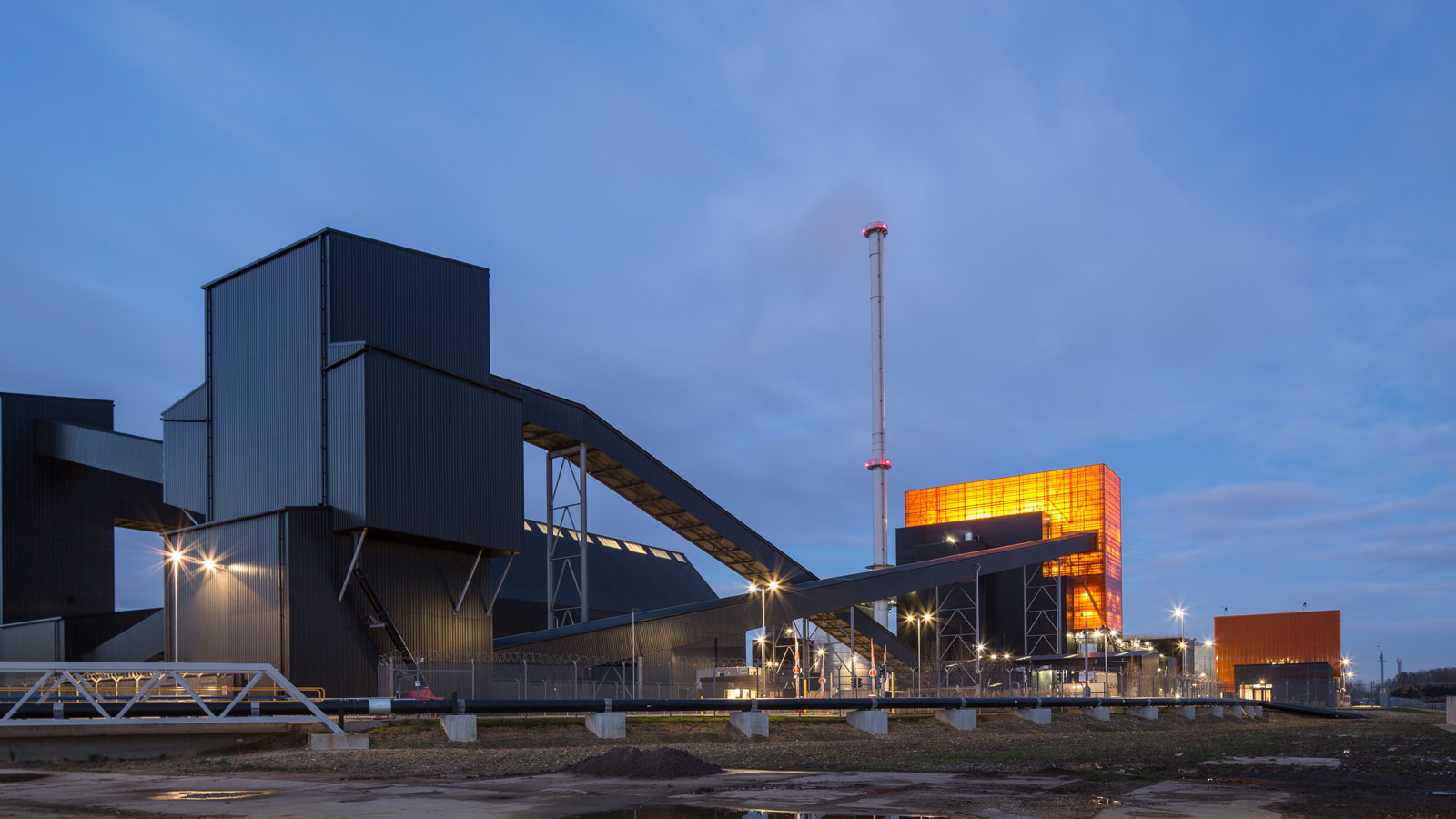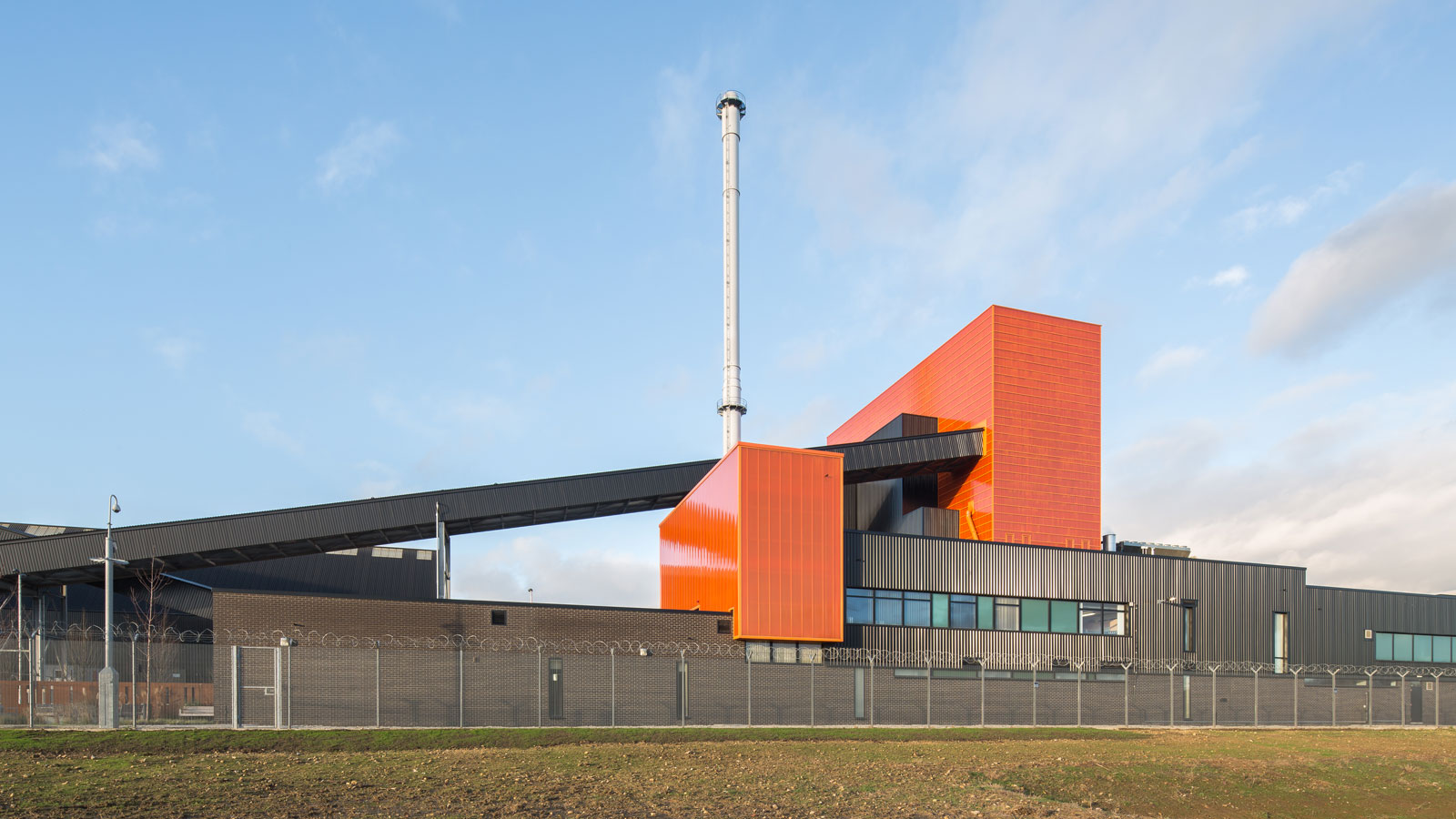#{Title}
#{Copy}
After a ‘record number of entries across all categories’ the Blackburn Meadows biomass plant on the site of the demolished cooling towers was honoured by winning the ‘Best Building’ at the Sheffield Design Awards 2016. The awards, run by the Sheffield Civic Trust in partnership with RIBA Yorkshire, celebrate the best new pieces of architecture, urban design and public art in Sheffield.
The new Renewable Energy Plant produces enough power for around 40,000 homes using recycled wood as its fuel source. It is also CHP ready with the potential to provide residual heating for surrounding businesses. The site was formerly occupied by the Blackburn Meadows power station built in 1921 by the Sheffield Corporation. Located within the River Don flood plain, alongside the M1, the site is extremely prominent and at nearly 40m high, the new buildings are a significant addition to the landscape.
In addition to the power station, the project includes extensive landscaping, with a water meadow created on vacant land to the south to promote ecological biodiversity and to provide flood water attenuation. A visitors’ centre provides an educational resource for school parties and other interested groups.
Clad in black profiled steel and dark brick, the plant’s exterior reflects the industrial heritage of the local area, while the site’s boiler house is enclosed in orange polycarbonate which glows at night to provide a beacon across the landscape.


The biomass plant echoes the massive structures of Yorkshire's industrial history, combining intelligent engineering with an imposing presence visible from the hills of Sheffield's western edge. The polycarbonate cladding at the heart of the plant subtly recalls the steel furnaces of the past. The whole structure is unashamedly workmanlike, partnering form and function in a setting still haunted by the ghosts of the Tinsley Towers.
As a beacon and as a piece of infrastructure, Blackburn Meadows had big shoes to fill. The popular memory of the cooling towers that formerly occupied the site has cultural resonance across the north of England. This new facility successfully negotiates the functional demands of the programme whilst still operating as a landmark. The limited palette of black corrugated metal and orange polycarbonate references Sheffield's industrial heritage without being kitsch or twee and the overall composition of the process driven form is satisfyingly complex and animated as one passes close by or indeed experiences the scheme from the M1 motorway.
Often, industrial buildings have good architecture fairly low down on their priority list. Creating functional spaces in an industrial building is obviously important, but the interesting features of the industrial processes are often masked by a low quality exterior. Here, the function has very clearly and dramatically created the form of the building. The requirements for the arrangement and the position of the internal machinery are obviously extremely complex, but the finished building brings a sense of clarity to this process that is remarkable. Of all the buildings on the shortlist, this was the one that stirred a sense of intrigue and curiosity that is the sign of good architecture.
The use of colour subtly hints at the processes within and the positioning both on the site and in the city allows a clear visibility for miles around. The cooling towers that formerly stood on the site became iconic, and in time I believe this building will offer the same sense of welcome to the city that they once gave.